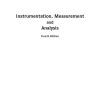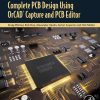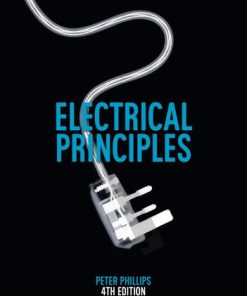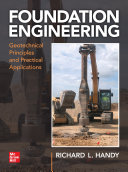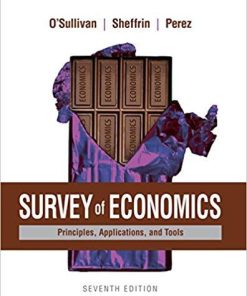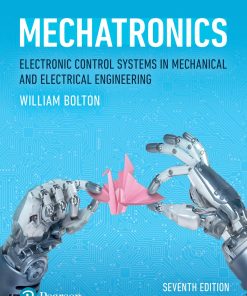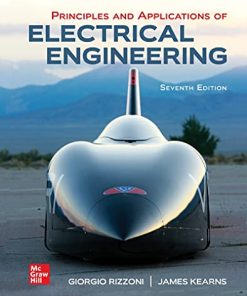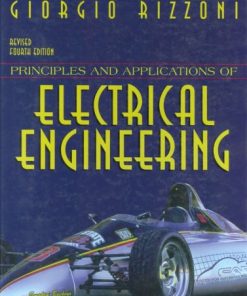(EBook PDF) Principles and Applications of Electrical Engineering 7th Edition by Giorgio Rizzoni 1260483797 9781260483796 full chapters
$50.00 Original price was: $50.00.$25.00Current price is: $25.00.
Principles and Applications of Electrical Engineering 7th Edition by Giorgio Rizzoni – Ebook PDF Instant Download/DeliveryISBN: 1260483797, 9781260483796
Full download Principles and Applications of Electrical Engineering 7th Edition after payment
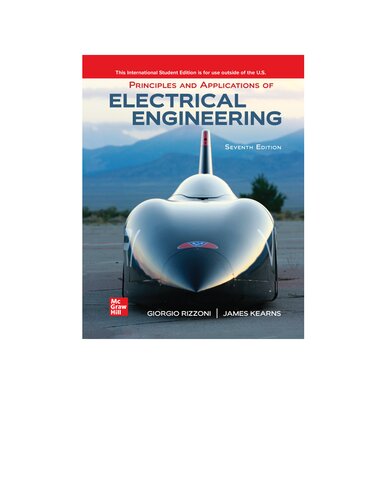
Product details:
ISBN-10 : 1260483797
ISBN-13 : 9781260483796
Author: Giorgio Rizzoni
Principles and Applications of Electrical Engineering provides an overview of the electrical engineering discipline specifically geared toward non-electrical engineering students. The hallmark feature of the text is its use of practical applications to illustrate important principles. The applications come from every field of engineering and feature exciting technologiesThe principal objective of the book is to present the principles of electrical, electronic, and electromechanical engineering to an audience of engineering majors enrolled in introductory and more advanced or specialized electrical engineering courses. A second objective is to present these principles with a focus on important results and common yet effective analytical and computational tools to solve practical problems. Finally, a third objective of the book is to illustrate, by way of concrete, fully worked examples, a number of relevant applications of electrical engineering. These examples are drawn from the authors? industrial research experience and from ideas contributed by practicing engineers and industrial partners.
Principles and Applications of Electrical Engineering 7th Table of contents:
PART I CIRCUITS 2
Chapter 1 Fundamentals of Electric Circuits 3
1.1 Features of Networks and Circuits 4
1.2 Charge, Current and Voltage 10
1.3 i-υ Characteristics and Sources 14
1.4 Power and the Passive Sign Convention 17
1.5 Kirchhoff’s Laws 22
1.6 Resistance and Ohm’s Law 29
1.7 The Node Voltage Method 38
1.8 The Mesh Current Method 48
1.9 The Node Voltage and Mesh Current Methods with Dependent Sources 56
Chapter 2 Equivalent Networks 79
2.1 Resistors in Series and Voltage Division 80
2.2 Resistors in Parallel and Current Division 88
2.3 Equivalent Resistance Between Two Nodes 93
2.4 Linear Networks and the Principle of Superposition 100
2.5 The Source-Load Perspective 105
2.6 Source Transformations 108
2.7 Thévenin and Norton Equivalent Networks 111
2.8 Maximum Power Transfer 132
2.9 Practical Voltage and Current Sources 135
2.10 Measurement Devices 136
2.11 Nonlinear Circuit Elements 141
Chapter 3 AC Network Analysis 163
3.1 Circuits Containing Energy Storage Elements 164
3.2 Capacitors and Inductors 166
3.3 Time-Dependent Waveforms 183
3.4 Phasor Solution of Circuits with Sinusoidal Sources 188
3.5 Impedance 191
3.6 AC Circuit Analysis 201
3.7 Instantaneous and Average Power 214
3.8 Apparent Power and the Power Triangle 221
3.9 Power Factor Correction 228
Chapter 4 Transient Analysis 257
4.1 Transient Analysis 259
4.2 Elements of Transient Problem Solving 261
4.3 First-Order Transient Analysis 272
4.4 Second-Order Transient Analysis 292
Chapter 5 Frequency Response and System Concepts 327
5.1 Sinusoidal Frequency Response 328
5.2 Fourier Analysis 335
5.3 Low- and High-Pass Filters 344
5.4 Bandpass Filters, Resonance and Quality Factor 355
5.5 Bode Plots 366
PART II SYSTEMS AND INSTRUMENTATION 392
Chapter 6 Operational Amplifiers 393
6.1 Ideal Amplifiers 394
6.2 The Operational Amplifier 399
6.3 Active Filters 425
6.4 Design of Active Filters 429
6.5 Integrators and Differentiators 435
6.6 Physical Limitations of Operational Amplifiers 443
Chapter 7 Electronic Instrumentation and Measurements 473
7.1 Measurement Systems and Transducers 474
7.2 Wiring, Grounding and Noise 479
7.3 Signal Conditioning 483
7.4 Analog-to-Digital and Digital-to-Analog Conversion 488
7.5 Comparator and Timing Circuits 500
PART III ANALOG ELECTRONICS 520
Chapter 8 Semiconductors and Diodes 521
8.1 Electrical Conduction in Semiconductor Devices 522
8.2 The pn Junction and the Semiconductor Diode 524
8.3 Large-Signal Models for the Semiconductor Diode 527
8.4 Small-Signal Models for the Semiconductor Diode 532
8.5 Rectifier Circuits 539
8.6 Zener Diodes and Voltage Regulation 547
8.7 Photodiodes 556
Chapter 9 Bipolar Junction Transistors: Operation, Circuit Models, and Applications 569
9.1 Amplifiers and Switches 570
9.2 The Bipolar Junction Transistor (BJT) 573
9.3 BJT Large-Signal Model 581
9.4 A Brief Introduction to Small-Signal Amplification 591
9.5 Gates and Switches 598
Chapter 10 Field-Effect Transistors: Operation, Circuit Models and Applications 611
10.1 Field-Effect Transistor Classes 612
10.2 Enhancement-Mode MOSFETs 612
10.3 Biasing MOSFET Circuits 619
10.4 MOSFET Large-Signal Amplifiers 624
10.5 CMOS Technology and MOSFET Switches 630
PART IV DIGITAL ELECTRONICS 644
Chapter 11 Digital Logic Circuits 645
11.1 Analog and Digital Signals 646
11.2 The Binary Number System 648
11.3 Boolean Algebra and Logic Gates 657
11.4 Karnaugh Maps and Logic Design 669
11.5 Combinational Logic Modules 682
Chapter 12 Digital Systems 701
12.1 Latches and Flip-Flops 702
12.2 Digital Counters and Registers 709
12.3 Sequential Logic Design 717
12.4 Computer System Architecture 720
12.5 The ATmega328P Microcontroller 724
12.6 The ArduinoTM Project 731
PART V ELECTRIC POWER AND MACHINES 740
Chapter 13 Electric Power Systems 741
13.1 Instantaneous and Average Power 742
13.2 Complex Power 749
13.3 Power Factor Correction 756
13.4 Transformers 767
13.5 Three-Phase Power 777
13.6 Residential Wiring; Grounding and Safety 783
13.7 Power Generation and Distribution 786
Chapter 14 Principles of Electromechanics 803
14.1 Electricity and Magnetism 804
14.2 Magnetic Circuits 815
14.3 Magnetic Materials and B-H Curves 830
14.4 Transformers 832
14.5 Electromechanical Energy Conversion 836
Chapter 15 Electric Machines 865
15.1 Rotating Electric Machines 866
15.2 Direct-Current Machines 879
15.3 Direct-Current Motors 886
15.4 Direct-Current Generators 896
15.5 Alternating-Current Machines 899
15.6 The Alternator (Synchronous Generator) 901
15.7 The Synchronous Motor 903
15.8 The Induction Motor 907
15.9 Electric Motor Drives 918
Chapter 16 Special-Purpose Electric Machines (online chapter)
16.1 Brushless DC Motors
16.2 Stepping Motors
16.3 Switched Reluctance Motors
16.4 Single-Phase AC Motors
16.5 Motor Selection and Application
Chapter 17 Power Electronics (online chapter)
17.1 Power Electronic Devices and Circuits
17.2 Voltage Regulators
17.3 Power Amplifiers
17.4 Transistor Switches
17.5 AC-DC Converters
Chapter 18 Analog Communication Systems (online chapter)
18.1 Introduction to Communication Systems
18.2 Spectral Analysis
18.3 Amplitude Modulation and Demodulation
18.4 Frequency Modulation and Demodulation
18.5 Examples of Communication Systems
Chapter 19 Digital Communications (online chapter)
19.1 A Typical Digital Communications System
19.2 Introductory Probability
19.3 Pulse-Code Modulation
19.4 Source Coding
19.5 Digital Baseband Modulation
19.6 Channel Coding
19.7 Advanced Topics
19.8 Data Transmission in Digital Instruments
People also search for Principles and Applications of Electrical Engineering 7th:
principles and applications of electrical engineering 6th edition
principles and applications of electrical engineering solutions
principles and applications of electrical engineering answer key
principles and applications of electrical engineering 5th edition
principles and applications of electrical engineering rizzoni 7th solution
Tags:
Principles,Applications,Electrical Engineering,Giorgio Rizzoni
You may also like…
Engineering - Chemical Engineering
Heat and Mass Transfer for Chemical Engineers: Principles and Applications 1st Edition
Engineering - Electrical & Electronic Engineering
Fundamentals of Electrical Engineering 2nd Edition by Giorgio Rizzoni 0077510411 9780077510411
Engineering - Electrical & Electronic Engineering
Engineering
Foundation Engineering: Geotechnical Principles and Practical Applications 1st Edition Handy
Uncategorized
(eTextbook PDF) for Survey of Economics: Principles, Applications, and Tools 7th Edition
Engineering - Mechanical Engineering & Dynamics
Engineering
Foundation Engineering: Geotechnical Principles and Practical Applications 1st Edition Richard Handy


